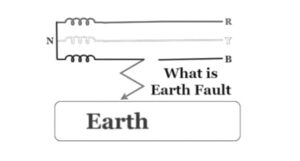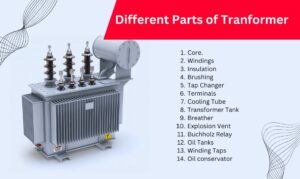Are you tired of that constant, annoying buzzing sound coming from your electrical transformer? Wondering what’s causing it and how you can finally enjoy some peace and quiet? Well, you’re not alone. Transformer noise can be as annoying as a persistent mosquito whining in your ear. It’s that constant throb that seems to creep into your space, disrupting your peace and quiet.
In this article, we will delve into the intriguing world of transformers, exploring the root causes of this noise and providing insights into effective ways to reduce it. Whether you’re an engineer, a homeowner with a curious mind, or someone constantly bothered by these irritating sounds, join us in this exploration to finally find the solution you’ve been searching for.
Understanding Transformer Noise
Transformer noise is a persistent concern within electrical systems, extending beyond mere annoyance to carry significant consequences. It can indicate inefficiency, leading to energy losses and accelerating wear and tear, potentially shortening the transformer’s lifespan. In residential areas, it can disrupt local ecosystems and even impact residents’ health due to prolonged exposure.
Transformer noise, as the name suggests, refers to the sound produced by power transformers during their normal operation and typically manifests as a continuous or low-frequency humming noise. This noise problem is not only bothersome but can also have far-reaching negative effects, making it a critical issue to address in electrical infrastructure planning and maintenance.
Factors: The Physics Behind Transformer Noise
Magnetostriction:
At the core of power transformer noise lies the magnetostriction effect, a phenomenon where the dimensions of ferromagnetic materials change upon an applied magnetic field. When an electrical transformer is energised, the core, typically made of iron or steel, experiences periodic magnetisation and demagnetisation. This causes the core to expand and contract slightly, generating mechanical vibrations.
These vibrations produce sound waves that manifest as the characteristic hum associated with transformers. The frequency of the hum corresponds to the alternating current (AC) frequency, often 50 or 60 Hz, depending on the region. This phenomenon, where the transformer is magnetically excited, is what gives rise to noise. Addressing the magnetostriction effect is crucial in minimising the amount of noise and its associated problems in electrical systems.
Acoustic Resonance:
Acoustic resonance is a phenomenon that occurs when the natural frequency of a system matches the frequency of an external force. In the context of electrical transformers, acoustic resonance can occur when the electromagnetic forces generated during the operation of the electrical system cause trembling in transformer windings, core and other components. These trembling can create audible electrical transformer noise, especially when the natural frequency of the transformer structure coincides with the frequency of the electromagnetic forces.
This resonance can amplify the noise levels, leading to an increase in the sound intensity generated by the transformer. Managing and minimising such resonance is crucial in efforts to reduce electrical transformer sound and ensure quieter operation.
Harmonics Distortion
Harmonic distortion refers to the presence of unwanted harmonic frequencies in the electrical system. In transformers, harmonic distortion can be caused by nonlinear loads connected to the transformer, such as electronic devices, variable speed drives, or power converters. These nonlinear loads draw non-sinusoidal currents, which introduce harmonic components into the electrical system. These harmonics can affect the magnetic field within the transformer, resulting in increased eddy currents and stray losses. The increased losses contribute to higher operating temperatures, which can cause the transformer’s insulation and core lamination to vibrate, leading to audible noise.
In substations, managing harmonic distortion is crucial for efficiency and maintaining a quiet environment. Strategies to reduce the noise produced from harmonic distortion include using harmonic filters, optimising insulation, and core design to minimise vibrations and leakage.
Other Factors Causing the Transformer Humming
1. Core Lamination:
Transformers commonly have iron cores with laminated sheets to minimise energy losses from eddy currents. Imperfections in these sheets, such as burrs or gaps, can disrupt the smooth magnetic flux path and contribute to noise.
2. Cooling Fans:
Transformers may incorporate cooling fans or pumps to regulate temperature. If not properly maintained or if their bearings are worn, these mechanical components can introduce noise into the system.
3. Load Conditions
Noise levels are affected by the transformer’s load conditions. Transformers operating at or near full load tend to be noisier than those at partial load. Effective load management can help reduce noise. Overloading a transformer beyond its rated capacity can result in increased heat and electromagnetic forces, leading to excessive noise.
4. Installation Conditions:
The design and installation of transformer enclosures play a crucial role in influencing the sound levels associated with transformers. Inadequate sound insulation within these enclosures can lead to the escape of transformer noise, further exacerbating the issue, particularly during the process of installing transformers.
5. Weight of Transformer:
The weight of the transformer itself can lead to ambient structural vibrations, which may contribute to the emitted noise. Proper support and damping measures can help mitigate this issue.
Methods to Stop Transformer Noise
Reducing transformer noise is crucial for maintaining a peaceful environment and ensuring efficient operation. Here are effective methods to mitigate transformer sound:
- Acoustic Enclosures: Installing soundproof enclosures around transformers can significantly reduce noise transmission. These enclosures are designed to contain and absorb sound, minimising its impact on the surroundings.
- Vibration Damping: Implementing vibration dampeners on transformer components, like core sheets and tanks, and covering the walls of the transformer cabin with noise-absorbent materials, such as acoustic kimsul or fibreglass, can effectively reduce noise generated by the transformer.
- Advanced Core and Coil Design: Engineers can optimise transformer core and coil designs to minimise magneto-elastic effects, acoustic resonance, and noise by selecting core materials with lower magneto-elastic properties and adjusting core dimensions as necessary in the transformer design.
- Maintenance and Monitoring Practices: Regular maintenance checks and monitoring of transformers are essential. Loose components or worn-out parts can increase sound levels, so timely repairs and replacements are crucial.
- Innovative Noise-Reducing Technologies: Utilising innovative technologies like low noise transformers, which incorporate specialised designs and materials to reduce noise emissions, can be an effective long-term solution.
- Smart Placement: Properly locating transformers away from sensitive areas, such as residential zones, can minimise the impact of noise on the surrounding environment.
- Use of Noise Barriers: Erecting noise barriers or barriers with sound-absorbing properties between transformers and sensitive areas can help reduce noise propagation.
- Oil Coolers: Using oil coolers instead of fans for cooling in transformers involves the circulation of oil through a heat exchanger to dissipate heat. This method results in quieter transformer operation without mechanical noise from fans.
- Load Management: Careful load management for transformers involves maintaining a stable and balanced load and avoiding sudden or drastic load changes that can create transient noise spikes.
- Regulatory Compliance: Meeting noise regulations and standards set by local authorities is crucial for ensuring that transformers operate within acceptable noise limits. Compliance involves noise level measurements and limits to prevent disturbances and ensure transformers meet noise thresholds.
Conclusion
Transformer humming and buzzing can be a nuisance, but it’s not an insurmountable problem. By understanding the root causes and implementing effective noise reduction techniques, you can enjoy a quieter and more efficient electrical system. While it is virtually impossible to eliminate noise completely, various measures can significantly reduce its intensity.
Remember that the key to success lies in proper material selection, thoughtful design, and diligent maintenance. At Grant Transformer, we ensure that our transformers confront the noise issue head-on, with products meticulously crafted not only to hush the noise of the transformer but also to elevate the overall performance and sustainability of your electrical infrastructure.
Reach out to us today, secure a trustworthy transformer, and experience the transformative difference firsthand.



